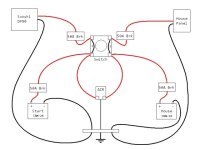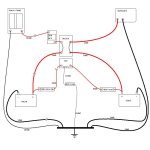thataway
Well-known member
- Joined
- Nov 2, 2003
- Messages
- 21,691
- Reaction score
- 63
- C Dory Year
- 2007
- C Dory Model
- 25 Cruiser
- Hull Identification Number
- DOR25652A707
- Vessel Name
- thataway
It would be interesting to know why Blue Seas feels that there is no longer a danger of diode destruction due to unregulated output?
Blue Seas sells at least two manual switches with AFD, and many of the other large battery switches have make before break switching of the major terminals, avoiding the necessity of an AFD.
However, with the VSR, the engine output is directly sent to a battery (maybe thru a switch) and the relay does not close, to charge the second battery until voltage indicates that the first--usually starting battery--is well into being charged (voltage of 13,8). It does not open the second battery switch, until the battery voltage drops to 12.7--and there is no charging.
The 1/2/all/off type os switch is for manual control, and total disconnect when you leave the boat (except for the auto bilge pump). When running with this type of switch, you will normally run on "1", which is the starting battery, and use the VSR to charge the house battery.
Blue Seas sells at least two manual switches with AFD, and many of the other large battery switches have make before break switching of the major terminals, avoiding the necessity of an AFD.
However, with the VSR, the engine output is directly sent to a battery (maybe thru a switch) and the relay does not close, to charge the second battery until voltage indicates that the first--usually starting battery--is well into being charged (voltage of 13,8). It does not open the second battery switch, until the battery voltage drops to 12.7--and there is no charging.
The 1/2/all/off type os switch is for manual control, and total disconnect when you leave the boat (except for the auto bilge pump). When running with this type of switch, you will normally run on "1", which is the starting battery, and use the VSR to charge the house battery.






